The paint brush I am most familiar with is Castilleja chromosa(syn. Castilleja angustifolia var. dubia) found growing in the Great Basin high desert steppe comunities across the west.
There is some debate as to whether the correct name is "chromosa" or "angustifolia". I have given up changing the name. It doesn't matter what you call it, it's still a nice species.
I have had a little success growing it in the garden by scattering seed. I get a few to sprout and one or two have attached themselves to host plants. If they attach their roots to annuals they are goners by the end of the summer. I have one plant four years old that attached it's self to a Hebe cupressoides. It is on it's fourth year and though it has to grow up through the branches of it's host it gets bigger each year. I found a couple of young plants had spouted in my thyme lawn this spring. It will be interesting to see if they make it to maturity.
C. chromosa can be found blooming in a range of colors from vivid red through to bright lemon yellow. It is stunning to see plants with differant colored flowers blossoming next to each other. Large plants are about a foot tall and eight inches across. Most are half as wide. I have found it growing as high as 8500" on dry windblown crests. In those sights it is dwarfed to four to six inches. I do not know if it would stay dwarfed in more sheltered sights.
Here is a flikr sight owned by a gentleman named Mark Egger that is dedicated to the the Orobanchaceae/paint brush family.
http://www.flickr.com/photos/mark_egger_castilleja/collections/
Another link to the photo sharing group of Orobanchaceae
http://www.flickr.com/groups/orobanchaceae/
Now for the good part pictures!!
Comments
Re: Castilleja chromosa(syn. Castilleja angustifolia var. dubia)
Lori
Thank you for pointing that out. I think I corrected the mistakes.
Re: Castilleja chromosa(syn. Castilleja angustifolia var. dubia)
Castilleja is a wonderful genus! So far I have only seen plants in South America (Ecuador), not in North America even if I have been there twice. I have to take a trip one day to view the magnificent colors by my own eyes!
Re: Castilleja chromosa(syn. Castilleja angustifolia var. dubia)
Two images of Castilleja miniata flowering here at the moment.
CASTILLEJA MINIATA
Re: Castilleja chromosa(syn. Castilleja angustifolia var. dubia)
Nice miniata. Castillejas in the U.K......
There is some dispute as to whether or not castillejas actually need a host to survive. I think they lack a haustorium and don't actually attach to the host plant.
They are very susceptible to being devoured by the giant flea beetle that also dines on penstemons (the plants come back, though).
Easiest way to sow seed is to pour it into the palm of your hand and rub it gently .....gently.....with a finger (preferably one on the other hand) to remove the seed coat. This helps the seed imbibe much more quickly. I get massive germination this way, and then, of course, manage to kill the plants some time between germination and setting them out in the garden.
Re: Castilleja chromosa(syn. Castilleja angustifolia var. dubia)
Good grief, I'm glad we have no castilleja/penstemon-munching giant flea beetles here!
Re: Castilleja chromosa(syn. Castilleja angustifolia var. dubia)
While attending the Eriogonum Society meeting this spring several of us were talking to Dr. James Reveal about growing castillejas in the garden and their need for a host plant. We were inquiring as to what the best host would be, and from what he had observed on his numerous field trips. He told us that castillejas need a host but that the host does not need to be of a differant genus or species. He has seeded several castillejas in the same pot and they use each other as hosts and live happily. I think it took us all aback a little, since we had never heard of this before.
I will give it a shot next year.
I have had them host on Penstemons, Cactus, Hebe, Calylophus and Chaenactis douglasii. When the Chaenactis douglasii died the castilleja promply died with it.
Re: Castilleja chromosa(syn. Castilleja angustifolia var. dubia)
Beautifully detailed photos, Cliff. I love how castilleja flowers seem to last forever, courtesy of the very persistent coloured bracts.
Re: Castilleja chromosa(syn. Castilleja angustifolia var. dubia)
Great pics, Cliff. And incredible photography.
Very interesting on several accounts, John. Especially that the host does not need to be of a differant genus or species. Could it be that haustoria are hardwired to a certain essential plant function(s)? And thus, with without the haustoria present and engaged, that function(s) is not workable?
I can't fathom an evolutionary advantage for this though...

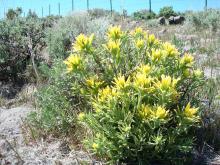
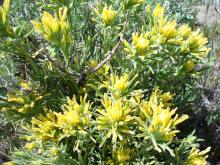
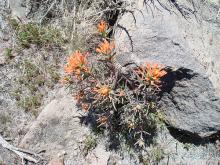
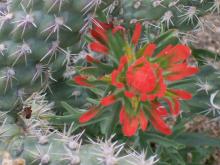
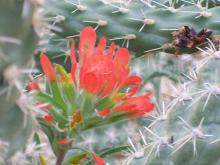
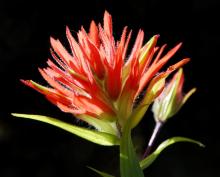
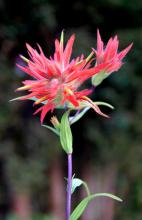
Beautiful! This will get viewers drooling!
NB. I suspect the spelling is actually "chromosa"? Please confirm, and if so, I can revise the subject title (having editing ability as a moderator).